-
Car Reviews
- All reviews
- Midsize SUVs
- Small cars
- Utes
- Small SUVs
- Large SUVs
- Large cars
- Sports SUVs
- Sports cars
- Vans
Latest reviews
- Car News
-
Car Comparisons
Latest comparisons
- Chasing Deals
Spain’s big-booted PHEV small performance wagon brings class, dynamics and outstanding efficiency, but it’s pricey
Often overlooked is the Volkswagen Group’s sheer breadth of compelling metal. Vee-Dub’s new Tiguan SUV, Audi’s electro-heroic R8 E-Tron GT, Skoda’s fresh ‘Modern Solid’ Enyaq wagon, Porsche’s pulse-blasting 911 GT3…just to cherrypick four diverse and interesting critical darlings of their respective segments.
Cupra? The segment-blurring Formentor half-wagon/half-SUV has been a Chasing Cars favourite, especially in hotter trims. Its hottest five-cylinder VZ5, a unicorn now finally confirmed for Australia mid next year, cannot land itself in our team garage quickly enough.
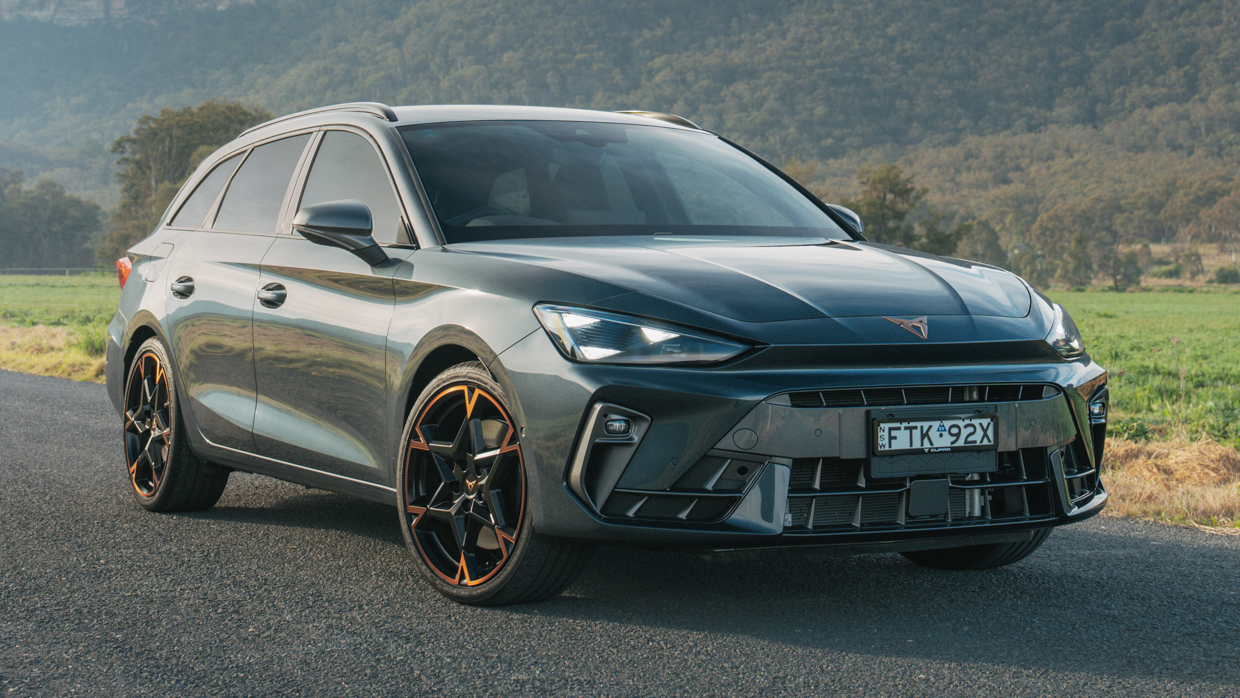
But one of the most interesting options in the broader VAG lineup is the Sportstourer wagon version of Cupra’s just-facelifted Leon lineup, to date a purely small hatchback offering and one technically related to Volkswagen’s Golf. And not merely because the Golf wagon has been dropped from the local lineup.
Cupra’s conspicuous schtick is that it only offers sporty, driver-focused models. Less apparent is that it’s VAG’s most powertrain-diverse brand, a mix of ICE, (mild) hybrid, BEV and PHEV where the last two powertrain formats account for 42 percent of local sales thus far in 2025.
The 2026 Leon VZe Sportstourer – the only trim offered – blends sportiness, small wagon practicality with a new ‘Gen2’ plug-in hybrid drivetrain based around seemingly humble 1.5-turbo petrol front-drive format that somehow plies hefty 200kW and 400Nm outputs pinned together with eye-raising 0.4L/100km consumption and 121km electric-only range claims.
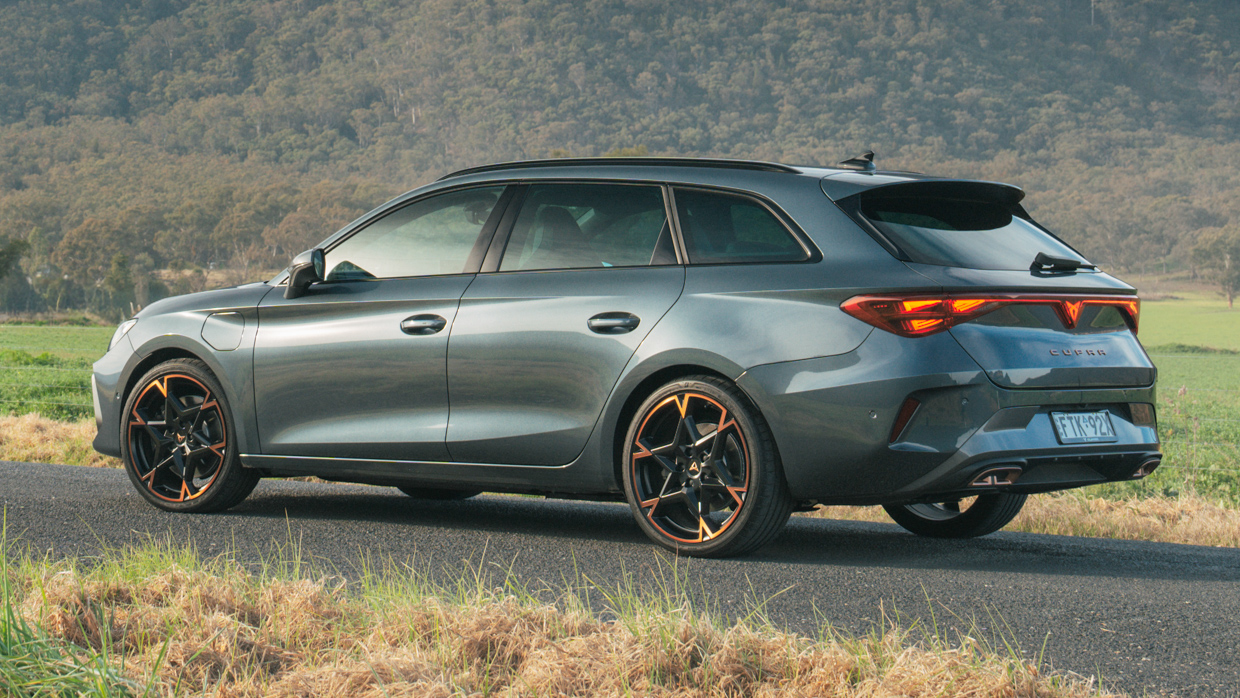
On paper, it’s arguably the most Cupra model variant in the brand’s showrooms right now.
It’s launched as part of the facelifted Leon update in conjunction with a new, modest 110kW/250Nm 1.5 mild hybrid-powered S variant and the (facelifted) return of the genuinely stout ICE-pure 221kW/400Nm VZX hot hatch, both of which we’ll review in due course.
But it’s really the new go-fast PHEV small wagon, a real anomaly on the local landscape, that grabs Chasing Cars’ curiosity the hardest.
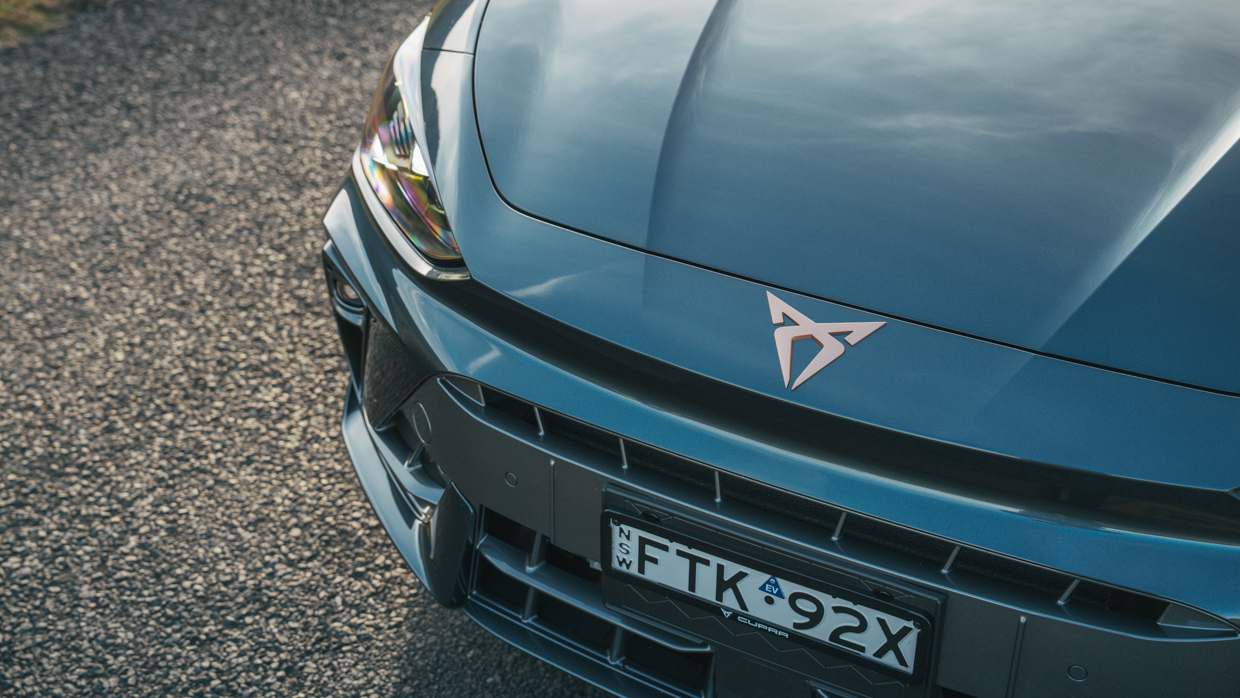
Add a fulsome features list and a heady circa-$70K pricetag (more below), and the Sportstourer has the potential, if executed with aplomb, to be an inspired amalgam of many virtues for many buyers. Or, perhaps, there’s the potential for it to fall flat in its somewhat lofty ambition of covering so many bases in one package.
New-for-Oz Leon Sportstourer wagon is currently only offered in 200kW plug-in VZe guise, listing for $69,990 before on-roads. However, Cupra Australia has confirmed that a hotter and pricier 245kW petrol all-wheel-drive VZx wagon is due locally in mid-2026.
The sole wagon sits atop the 221kW Leon VZx hatchback ($64,990 list), in price if not in output and performance.
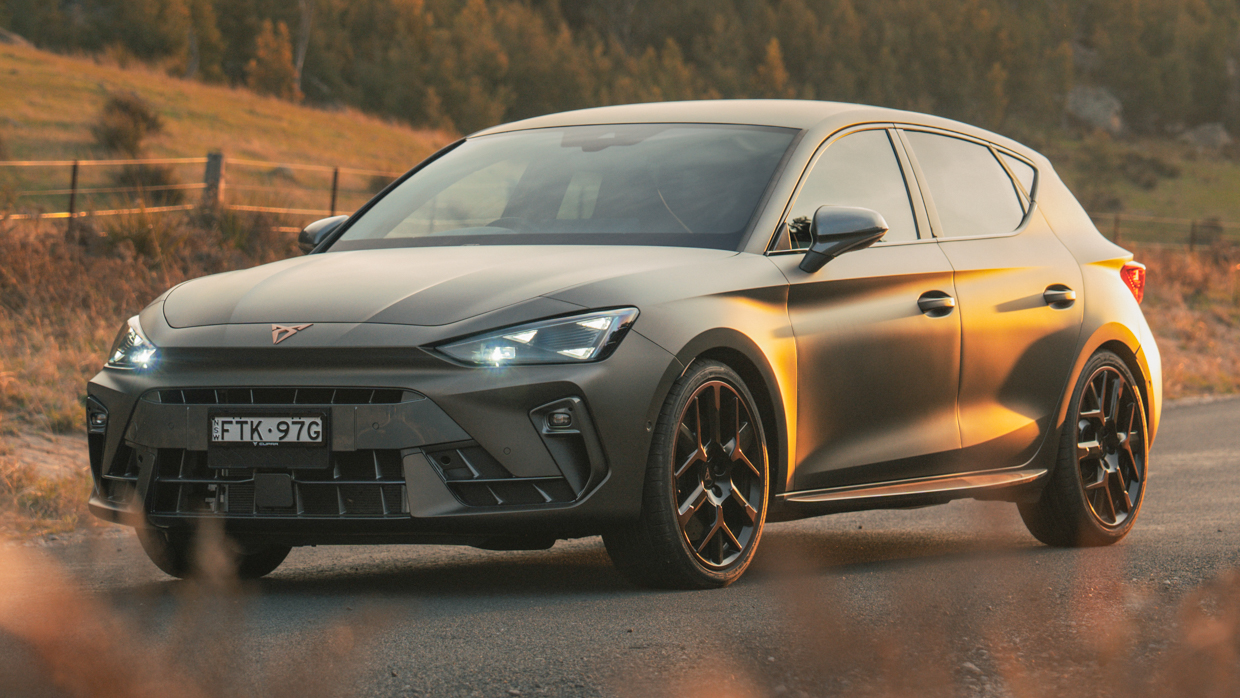
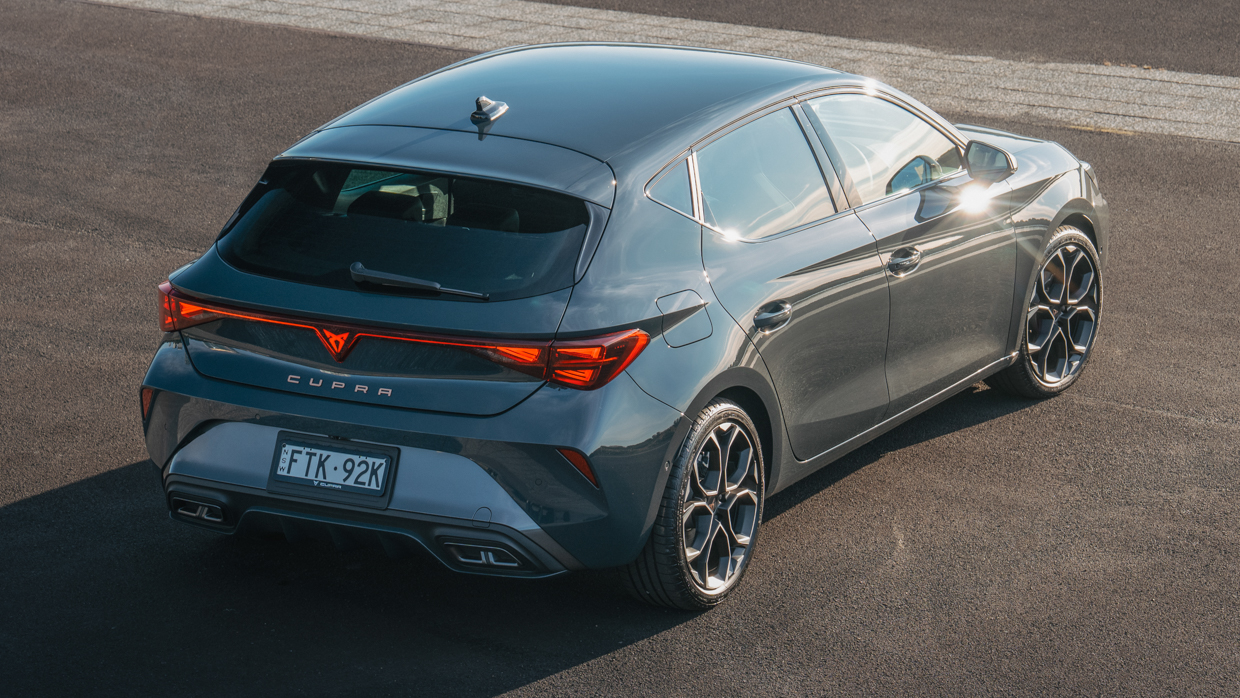
The third and final Leon variant of the facelifted lineup is the new price-busting S variant, which drops the admission price for Cupra’s small-segment nameplate down to $46,990 before on-roads. A 150kW VE mid-range hatch will join the fold in early 2026.
Standard features for the Sportstourer VXe include:
A panoramic glass roof with front tilt and slide is available at a $2000 upcharge ($1800 for hatchback).
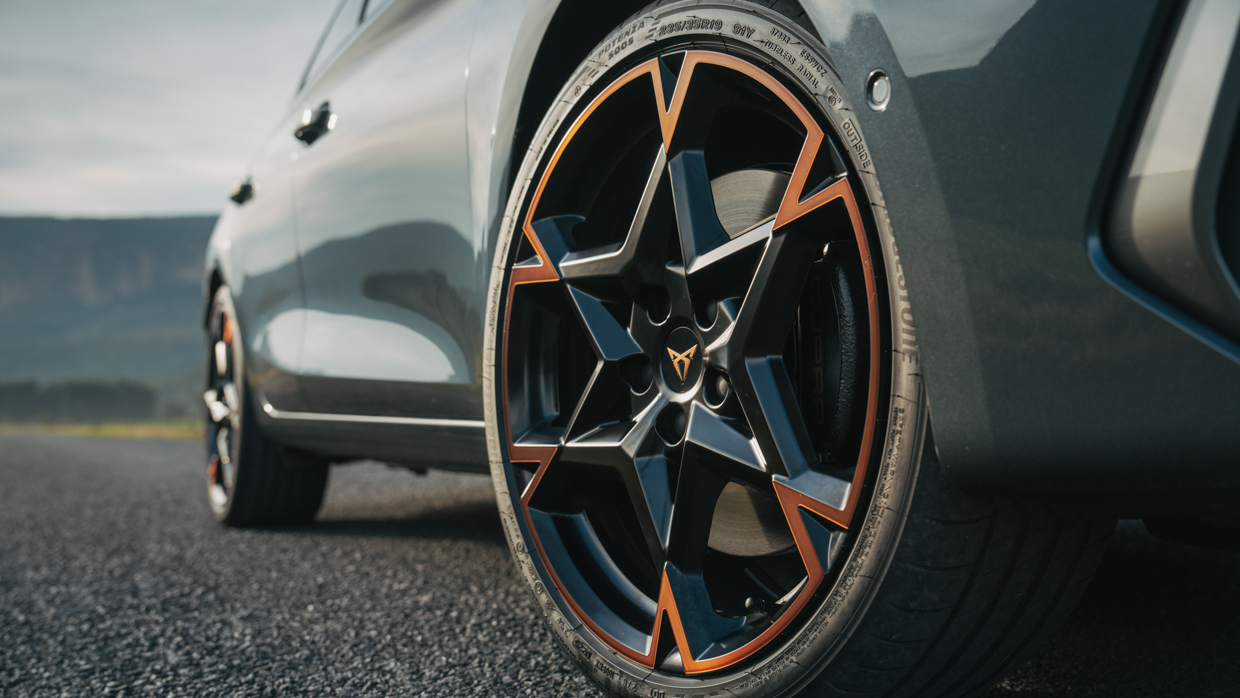
There are 10 colours available for the lineup. Standard no-cost colours include Fiord Blue, Glacial White, Magnetic Tech and Midnight Black, while three premium choices in Taiga Grey, Graphene Grey and Dark Void all cost $620. A further three matte options called Century Bronze, Enceladus Grey and a satin version of Magnetic Tech want $2650 apiece.
Not offered for Sportstourer are the Leather & Sound pack ($2200) for the base S and a tasty Extreme Package ($7600) with six-pot Akebono brakes and carbon-fibre shell race-style bucket seats, the latter reserved exclusively for the VZx hatchback.
Rule (or strongly suggested guideline) number one: don’t buy a PHEV if you’re not going to plug it in regularly. Buyers who get lazy are better off with the (rather excellent) Skoda Octavia RS wagon and wipe the Cupra wagon from the shopping list.
Why? Because you’ll only get all of the oomph, a considerable 200kW and 400Nm at that, and exceptional electric range (121km claimed) and combined fuel economy – excellent at around 2.8L/100km as tested, if somewhat higher than the advertised 0.4L/100km claimed.
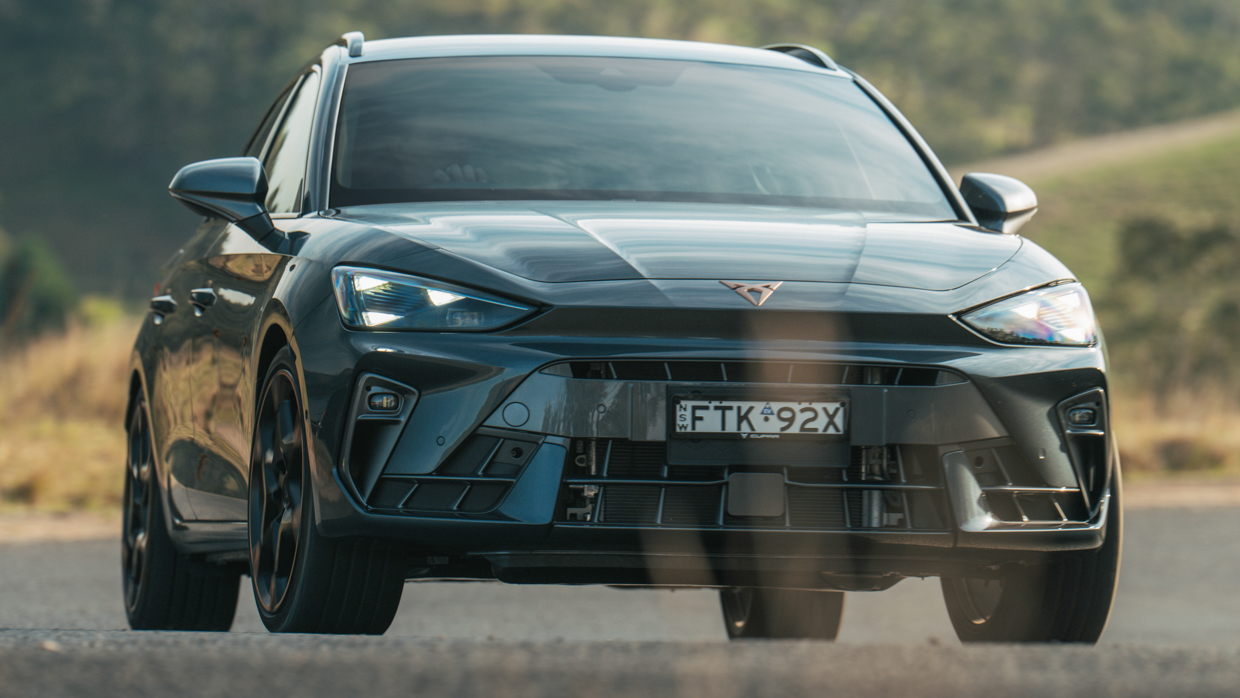
Hose-dodging will return consumption closer to the six-litre mark on a low or dead battery, where the little 1.5-litre turbo four is working constantly and you mostly miss the wonderful torque filling effect of the electric motor that makes the VZe powertrain refinement oh-so silken.
Local ‘Gen2’ PHEV powertrain breakdown stats are thin on the ground, but the European specifications – with its nigh on identical output and range credentials – has outputs at 130kW/250Nm for the 1.5 turbo engine and 85kW/330Nm for the electric motor assistance, the latter using a 20kWh (net) battery.
And just how superior the PHEV system is to the (110kW/250Nm) 1.5L turbo mild hybrid format is shocking when sampling both back to back, as we did at the Australian range launch of face-lifted Leon.
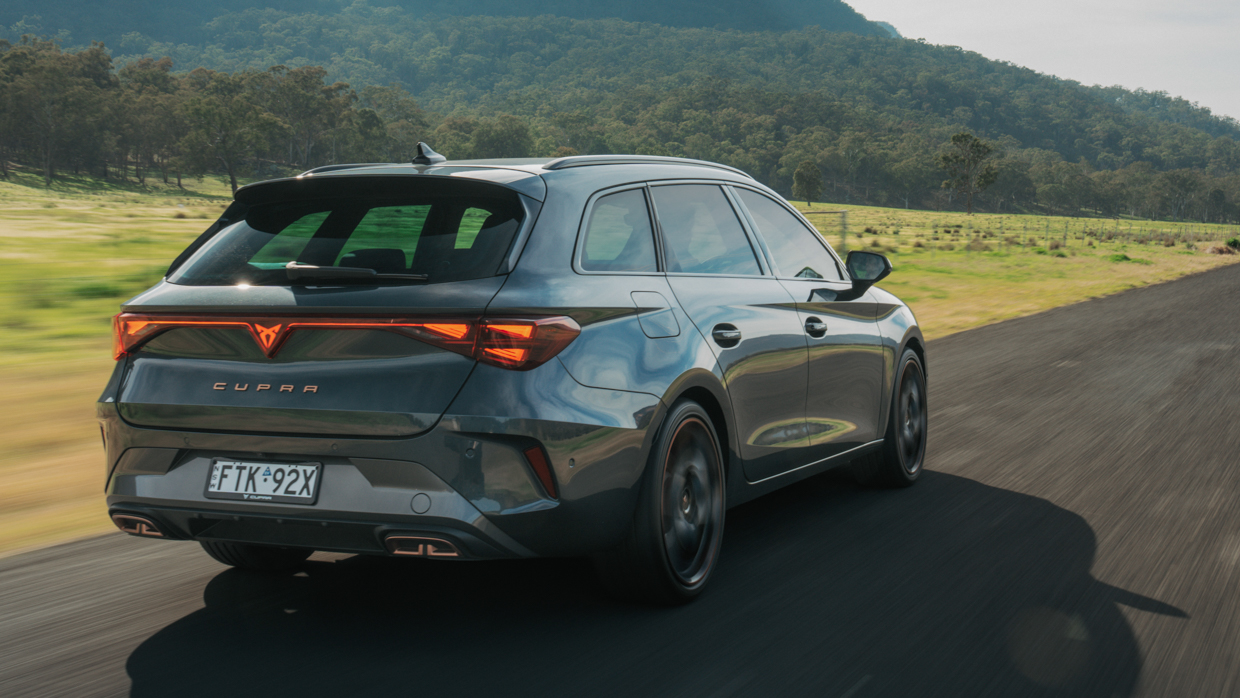
The mild system, as fitted to the lightweight S hatch, is rorty and energetic, but sweats for its keep and lacks fundamental response crispness at times. The 48-volt assistance struggles to putty over some shady synchronicity between the engine and the seven-speed dual-clutch gearbox.
The PHEV, though, launches cleanly, smoothly and near silently, be it driven gingerly or when called to march. Thrust is heady, thanks to the undertow of an additional 330Nm of electric torque, with a swelling energy that’s lusty and satisfying if not as crackerjack potent as the 221kW 2.0L VZx hatch. Stands to reason.
Actual pace? At 7.3 second 0-100km/h claimed, the portly 1760kg wagon is well shy of the lighter, more-powerful (5.7sec) VZx hatch. But the numbers do sell the usable, roll-on energy of the PHEV system well short.
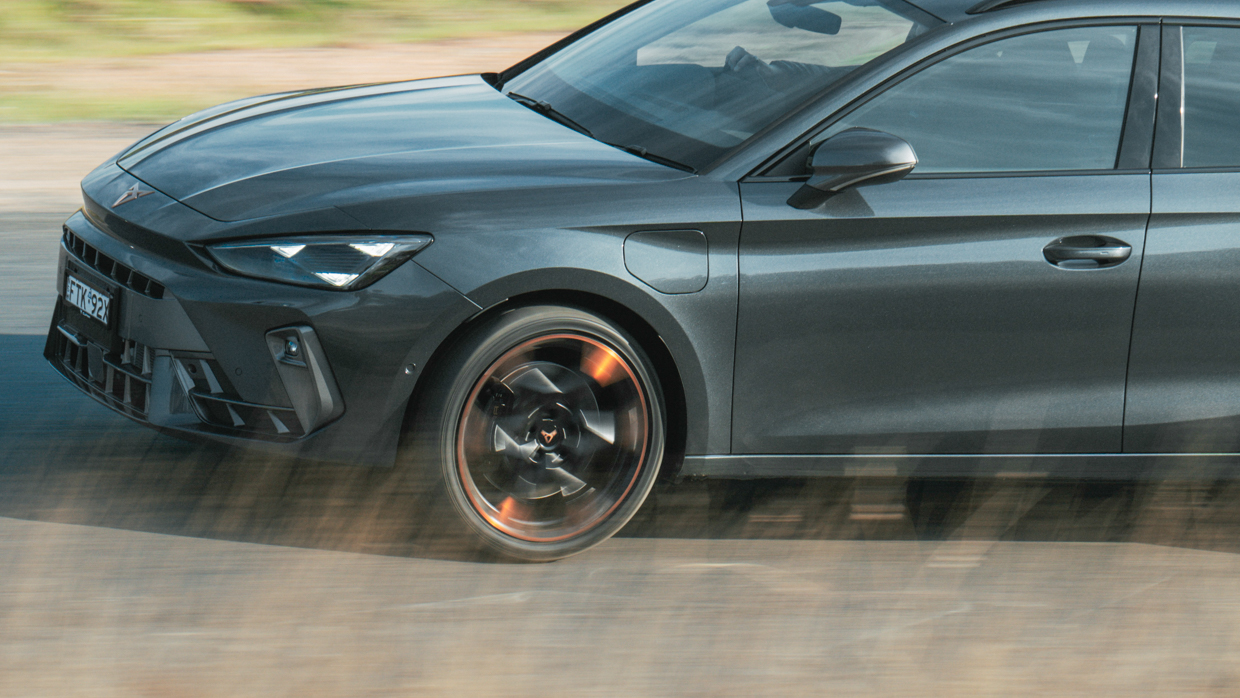
But it’s just how clean and silky this powertrain delivery is that impresses most. The turbo engine dips in and out of drive so inconspicuously via a six-speed ‘wet’ dual-clutch that the only genuine annoyance on the move is the driver’s display: a white crescent for engine rpm pops into and out of view distractingly as the engine clocks on and off duty, near silently.
Recharged and left to self regulate drive in normal ‘hybrid’ mode, consumption can vary wildly depending on location and driving style.
Kicking off in regional New South Wales, attacking country backroads with 100km/h average speeds, it sees sixes…before eventually landing at the aforementioned 2.8L average across balanced driving, once you’ve tamed the pace down. We covered around 300 kilometres across two days in the Sportstourer, and high twos was the consistent theme.
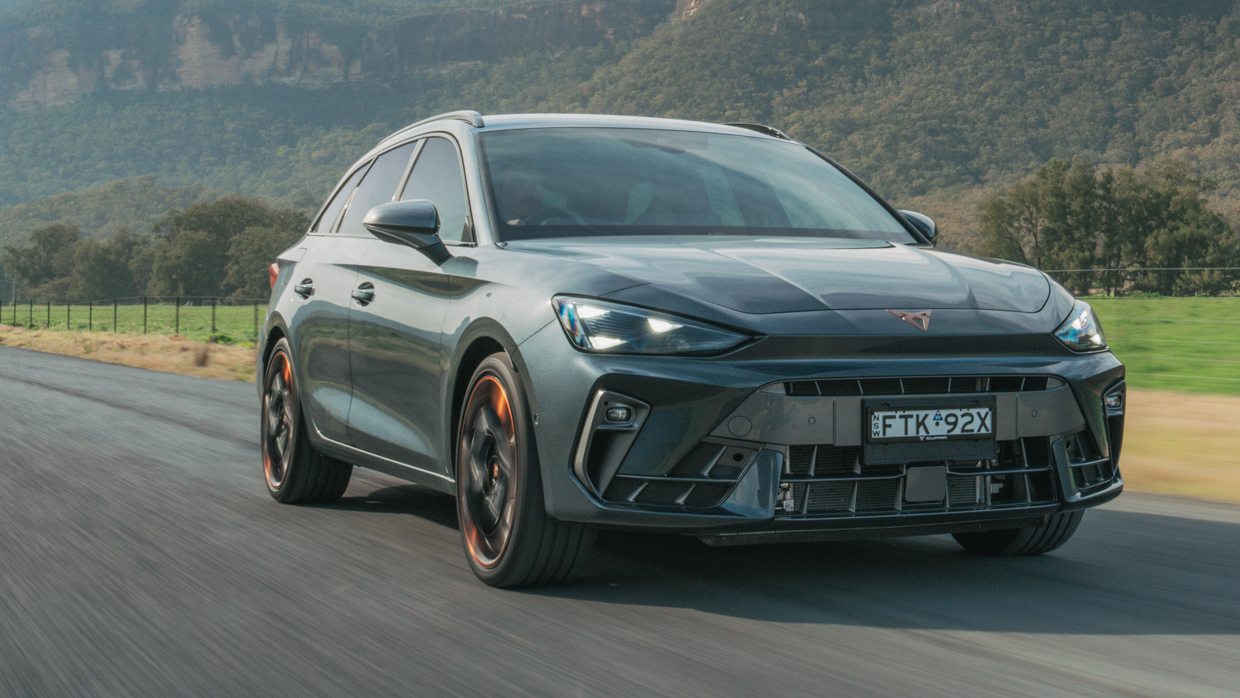
Dynamically, the wagon’s longer (4656mm versus 4398mm) and heavier form – with much of it in big-boot rear overhang – makes it a touch more ponderous to change direction than its hatch siblings. Further, the packaging of the PHEV gubbins add a certain ‘swing’ to the rear end of the front-driver.
But it is sporty and fun to punt, with shades of Cupra spunk in its attitude. It’s a grand tourer by intent and certainly that’s the role it slips most comfortably into on road, but not to the detriment (too much) of dynamism and driver connection. It’s still crisp and engaging.
Cupra prides itself on a characteristic steering ‘feel’, in linearity, feedback and in the related obedience of the front end. But where it convinces enough as a driver’s tool that’s faithful to the Spanish brand’s recipe is that its canny balance remains resolute even when you strong-arm the chassis beyond the available grip (which is pretty handy in itself).
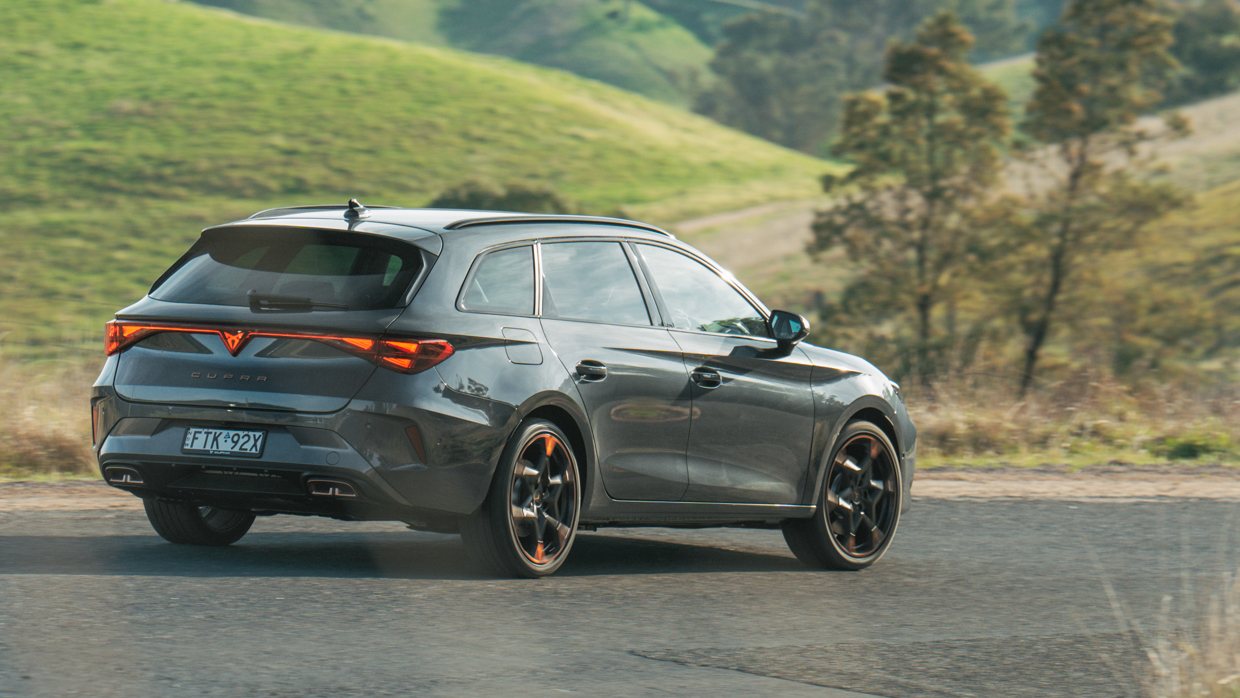
Normal play for a hot hatch, but for a front-drive, plug-in family wagon…
Ride, too, is excellent. It fits the familiar VAG Dynamic Chassis Control sprinkled with Cupra’s own fairy dust in overall tuning, with a result we’ve seen many times before: the middle settings so sweetly blend ride comfort with body control that you simply set it and forget it.
Downsides? Precious little. In normal drive mode, the natural regeneration brought on by the PHEV system is a touch strong, but that’s nitpicking what’s an otherwise uncompromised long-hauler with incredible frugality and enough spice for serious backroad adventure.
There’s no mistaking the brooding, Gothic vibe the Cupra designers have fallen headfirst into and the facelifted Leon, including its big-butt Sportstourer guise, certainly doesn’t deviate from the theme. In fact, there’s not a lot facelifted inside from the old cabin, bar a slightly slicker centre console array.
Of course, there’s some unmistakable kinship with offerings from cousins Volkswagen and Skoda, especially in areas of visual/media tech and some of the user interface. The often overlooked and positive upshot of this is that Cupra (and Skoda) offer buyers the Volkswagen experience they might be after with a distinctly different flavour.
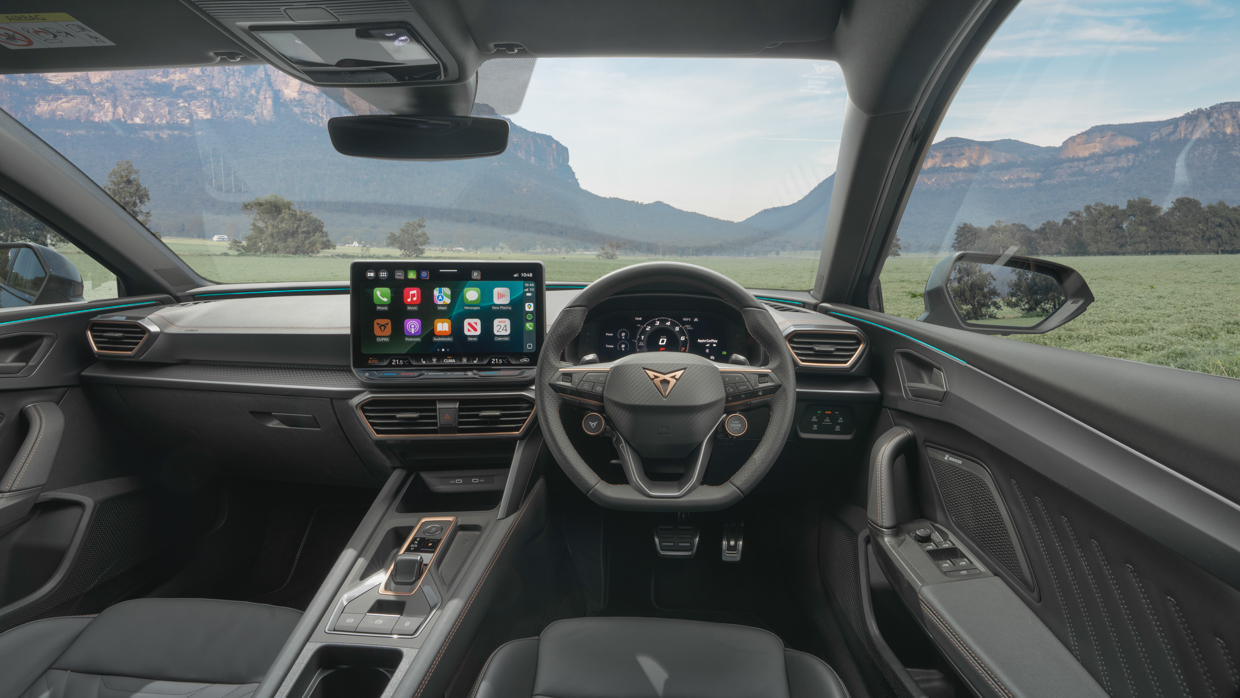
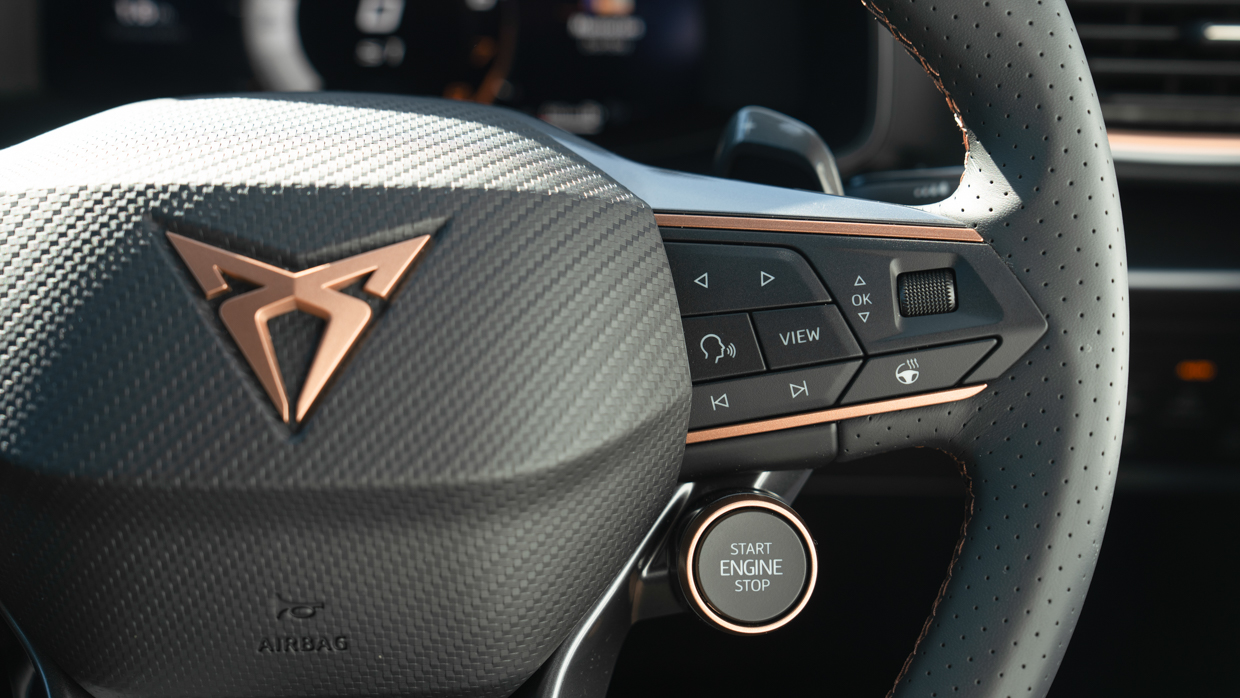
For your reviewer’s personal tastes, Cupra creams Volkswagen for interior design maturity, richness, premiumness (in select areas) and a sense of occasion… even if, yes, it’s a bit gloomy.
The cabin of the Leon is far more preferential to that of a Golf GTI what with its incongruent candy colours and slightly tacky ‘yoof-ful’ zing unfit for the sort of money a fast front-drive small Volkswagen commands.
The Cupra wheel is neat, the variety of driver display skin a little more Audi-like, and the restraint on the display colours and subtle horizon line mood lighting – which transmits some safety visuals, such as blind spot indication – has a nice restraint to it. Not many conspicuously cheap plastics, either.
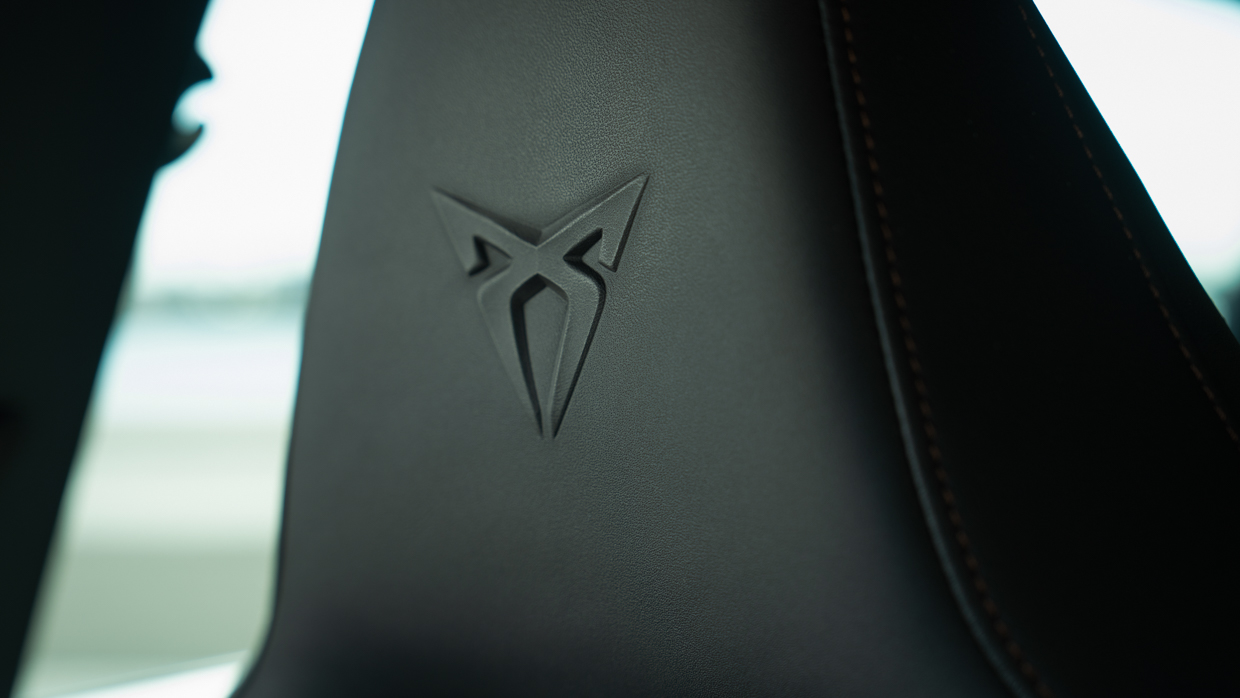
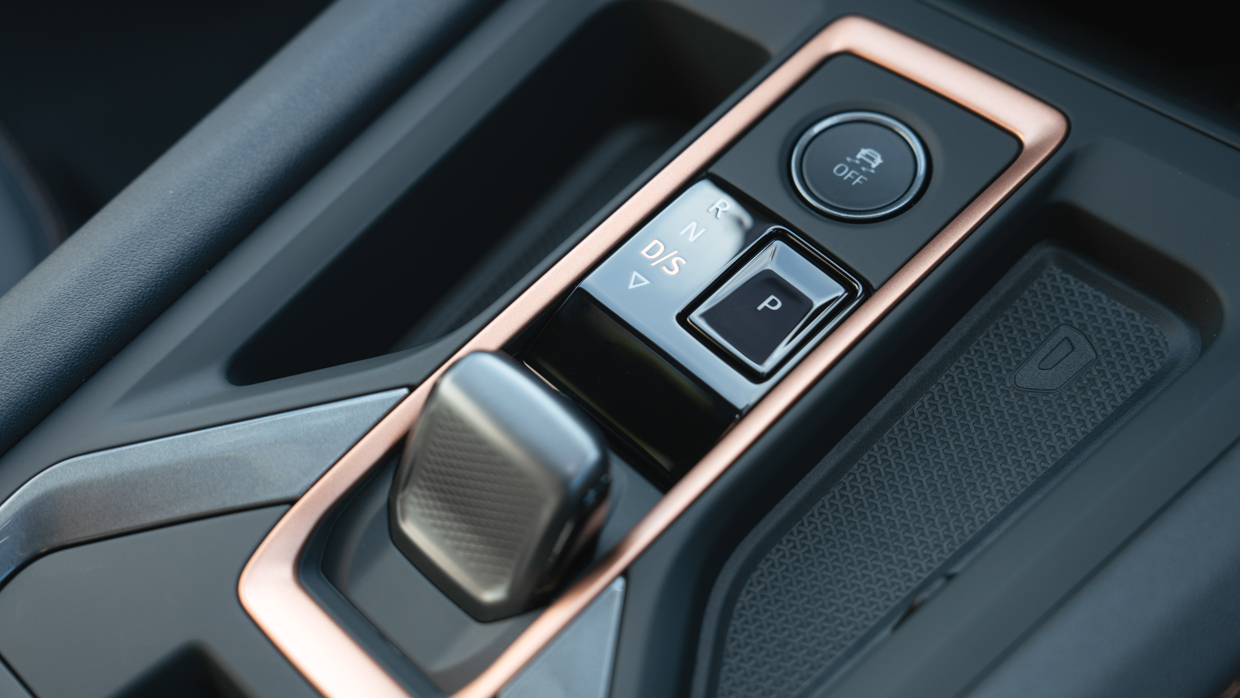
The seats are really good, to a point. They score highly for sporting purpose but could do with a touch more natural comfort, at least after spending hours at the helm. We did sample the optional Extreme Package race buckets in VZx hatch during the launch program and they are utterly brilliant all-round.
Feature wise, there are enough goodies to justify the wagon’s heady $70K pricepoint…which only goes to show how good value the base S is given the price-buster shares the same 10.25-inch driver’s display and fulsome 12.9in media touchscreen, as well as the three-zone climate control.
However, the higher-grades’ so-called Moonslate leather appointment across the seats is nice, supple and welcoming, though for the money the Sportstourer asks for the lack of seat ventilation is a somewhat disappointing.
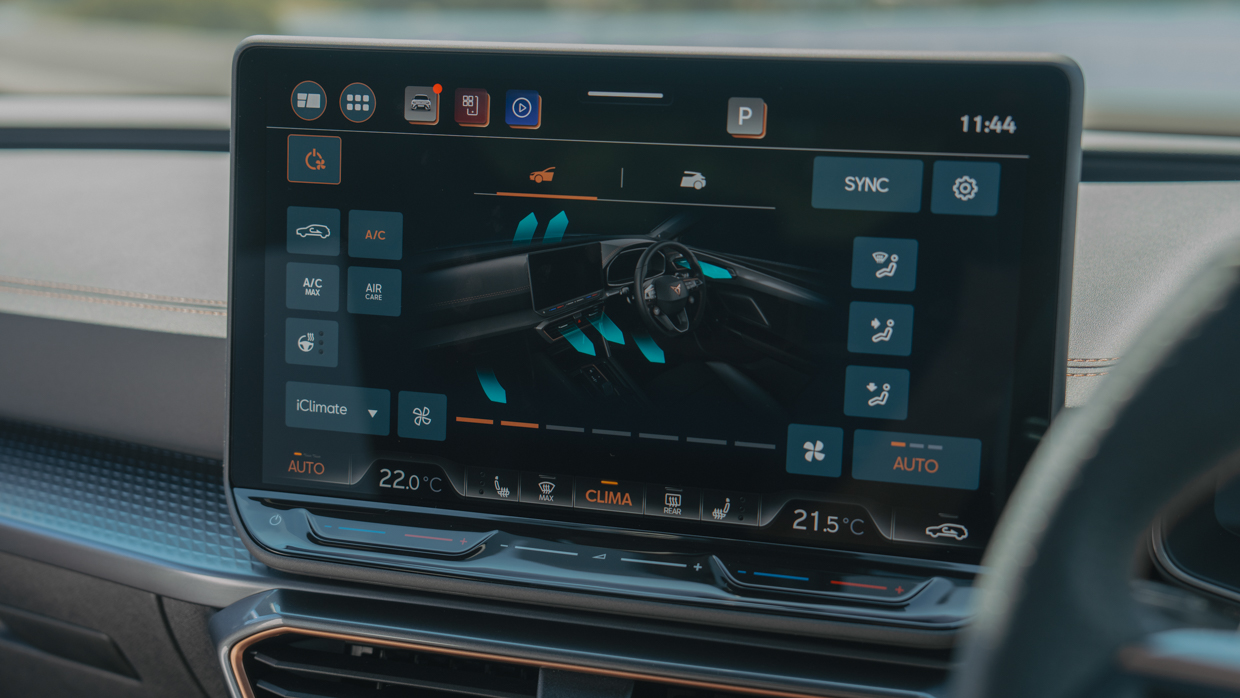
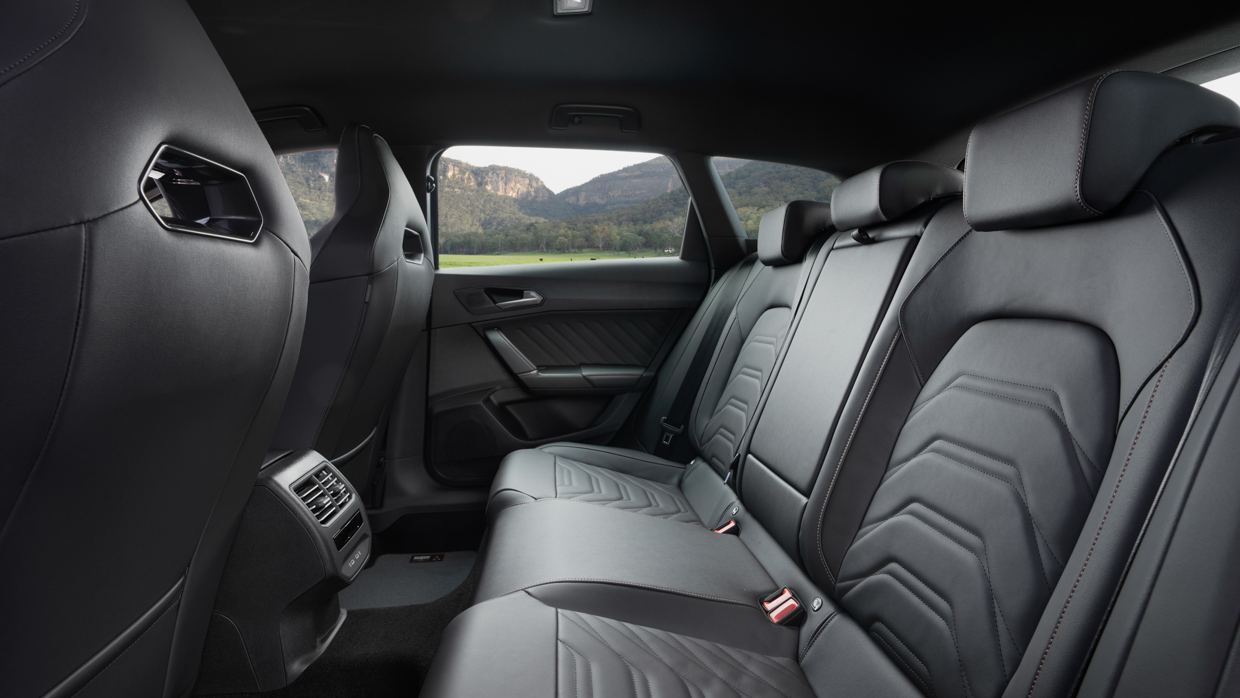
VAG’s silly slider adjustment for aircon temperature persists, but at least they’re illuminated in the Cupra format. And while the media format’s menuing isn’t the last word in intuitive simplicity, this version of the operating system presents handy assignable shortcut icons on the homescreen.
The extra 258mm of body length over the hatchback allowed designers to balance second row space with a nice deep boot that, in PHEV guise, is a very usable 470 litres (and that’s as much as 620 litres in ICE versions offered in Europe).
There’s ample knee room, a decent sense of airness despite the gloomy cabin theme, and the third-zone climate control is complimented by USB-C device power.
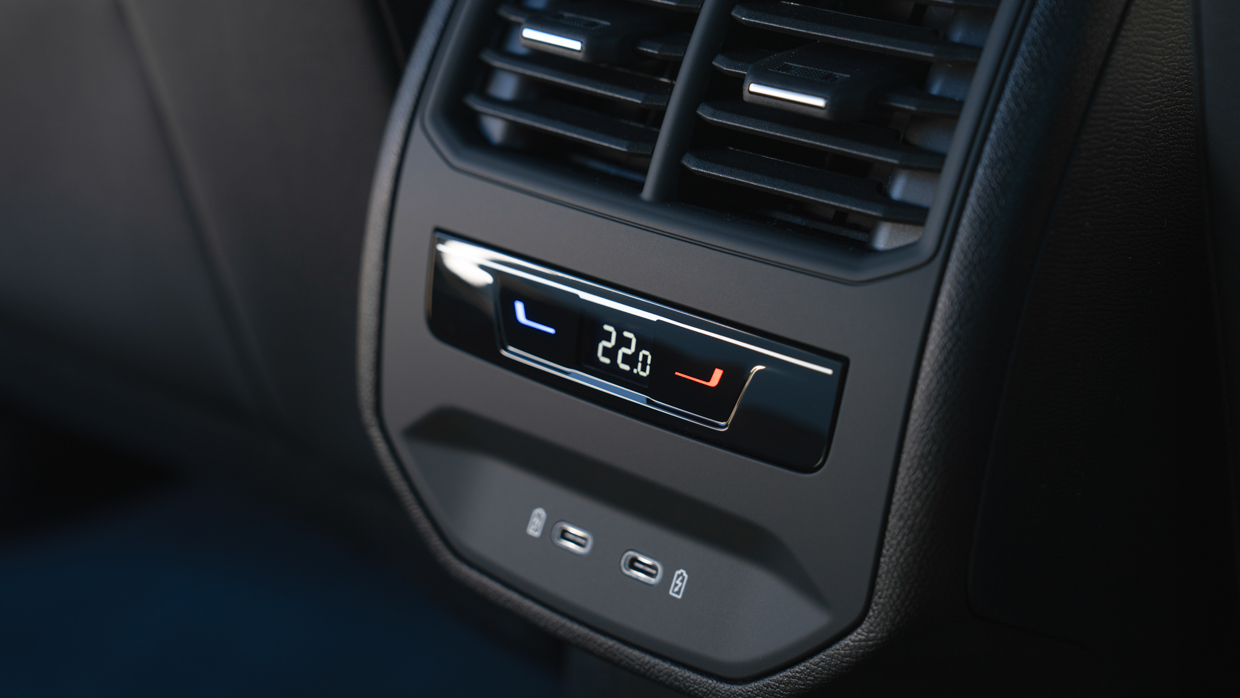
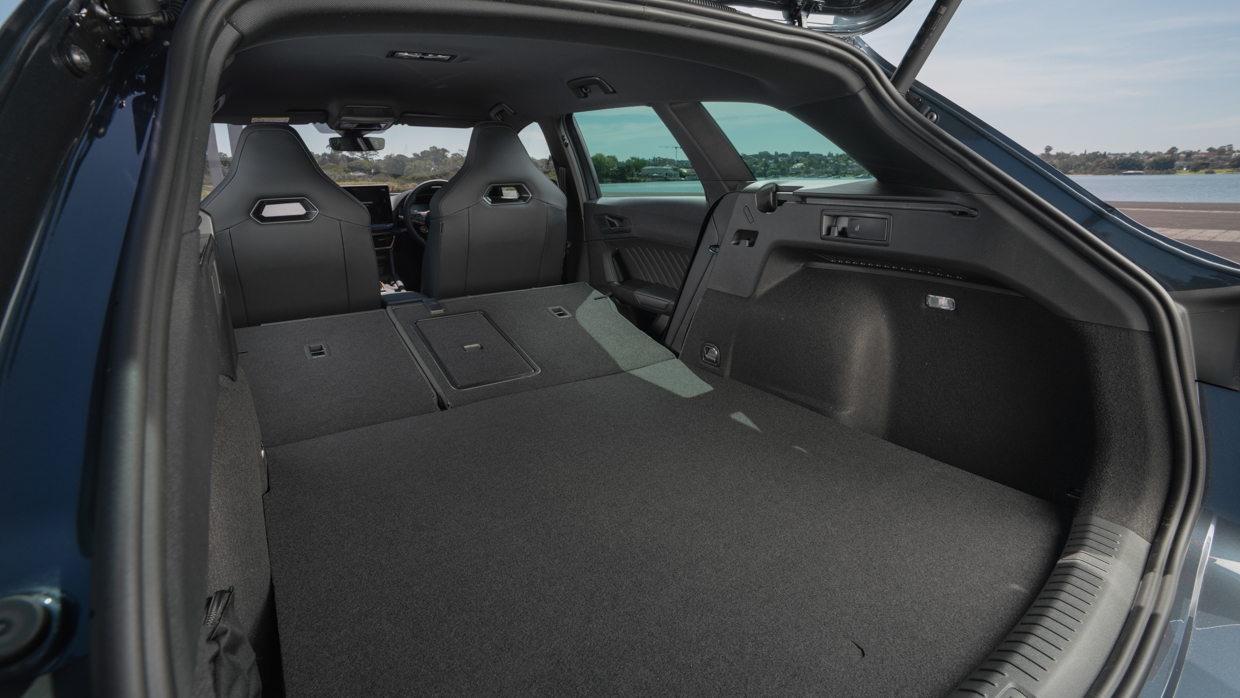
A pronounced hump in the centre of the rear bench will limit comfort for adults three across – ditto the prominent tail shaft tunnel put to use in next year’s all-wheel-drive versions – but there is enough room for five-up accommodation at a pinch.
As a facelift, the Leon carries over a five-star ANCAP assessment based on testing on the related Seat Leon (by Euro NCAP) conducted back in 2020, which applies to all variants including plug-in hybrids. This rating is due to expire in December 2026.
It scored 91 percent and 88 percent for adult and child occupant protection respectively, with 71 percent for vulnerable road user protection and 80 percent for safety assist.
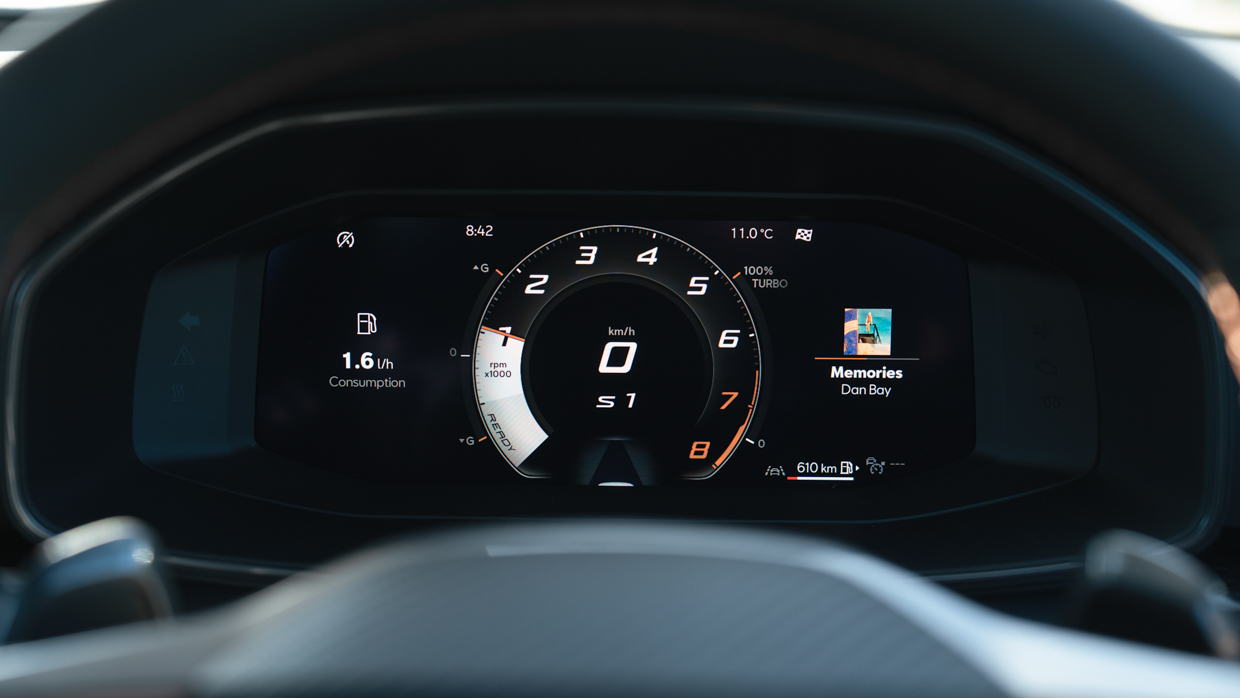
Features fitted include:
During hundreds of kilometres of testing across all three variants of the Leon range, we noticed no annoying or abnormal behaviour, despite fitment of the oftentimes cursed driver monitoring and traffic sign recognition systems.
Like any PHEV, fuel consumption will be wholly dependent on how and where the vehicle is driven and how regularly the battery is recharged.
Of course, average consumption claims for plug-ins – here at 0.4L/100km – is murky, as any vehicle with an EV range claim beyond 100kms – here it’s 121kms – ought to hit triple figures, conditionally, without internal combustion drive at all.
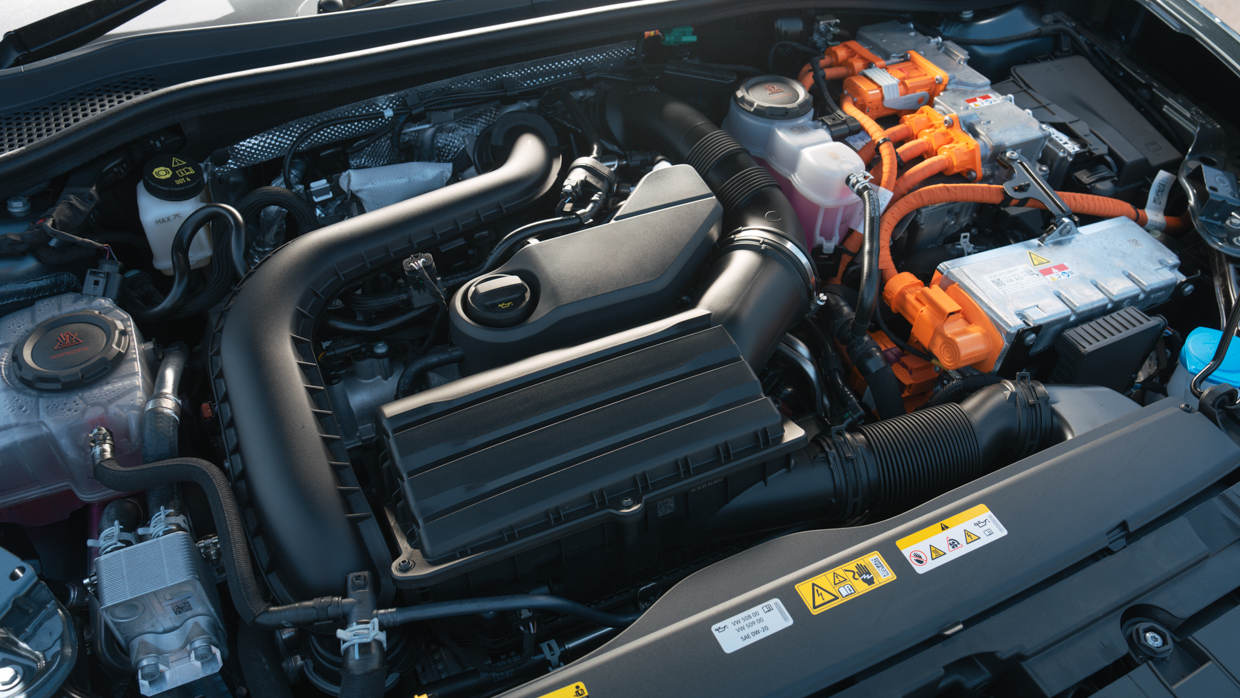
That said, preliminary and not entirely sympathetic testing suggest a real-world consumption of around 2.6L-2.8L over distance, with consumption scaling up to the six-litre mark with a depleted battery. Only a full-tank, fully-charged single journey would return the most accurate figure.
Charging? On its 50kW DC peak the VZe returns a claimed 10-80 percent charge in 26 minutes, while peak AC charging is 11kW. Mode 2 and 3 cables are supplied with the vehicle as standard.
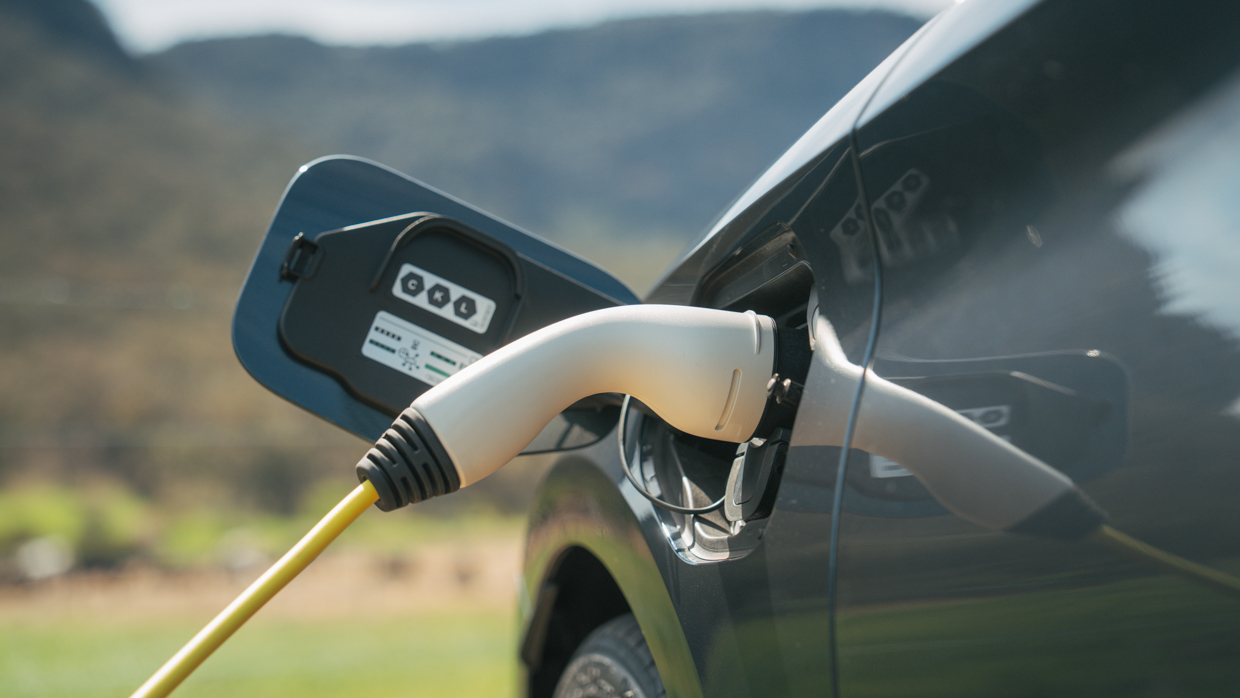
Servicing? Cupra currently advertises a five-year bundle at $1990, with 12-month/15,000km intervals, which the local importer states could change come January 1st 2026.
Warranty is five years of unlimited-kilometre coverage.
Disclosure time. Your author is a wool-dyed petrolhead, has driven the VZx hatch with big-brake/race-seated Extreme pack, and it’s wicked: the enthusiast pick of the litter. And with a 245kW petrol all-paw Leon wagon and the 287kW five-pot Formentor VZ5 confirmed for Oz, 2026 is going to an exciting year for Spanish-bred, ICE-powered fun factor.
And yet, for your author’s real world of daily urban commutes and regular long-haul road trips, for a priority of hushed fuss-free comfort with ample thrills at the drop of a foot, the plug-in Sportstourer makes an incredible amount of sense. If you’re prepared to plug in diligently.
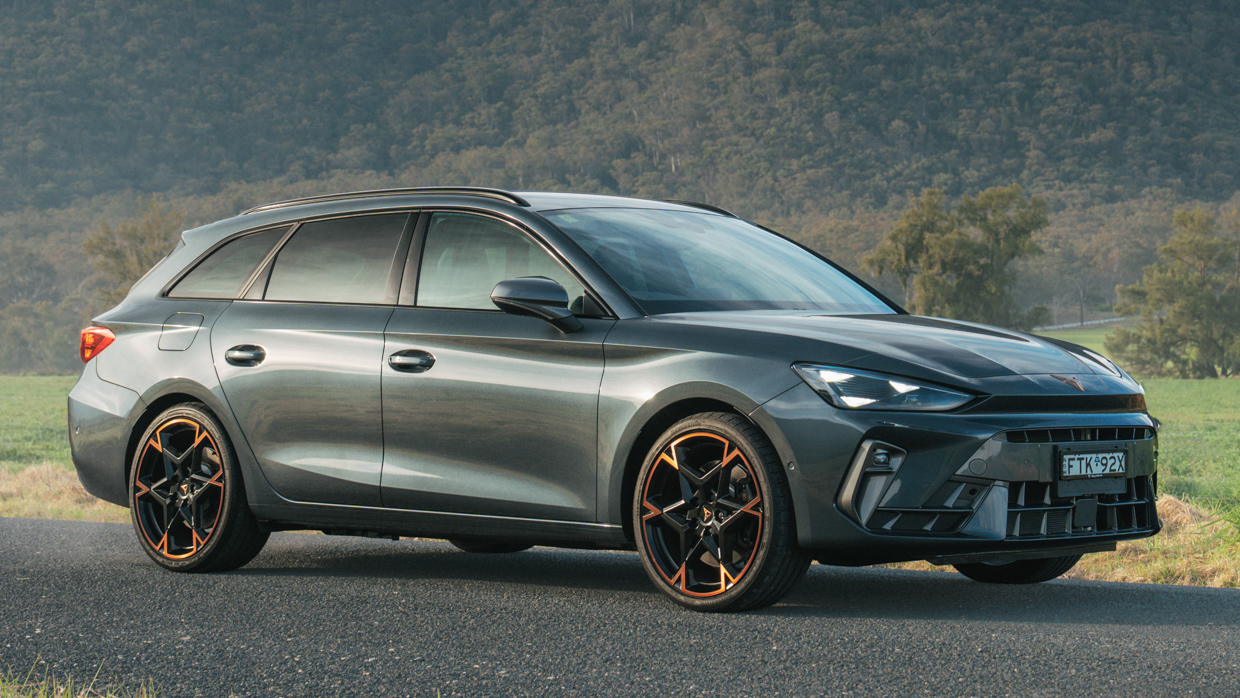
The real trick is to ignore the plug-in’s on paper stat and get over the 1.5-litre engine mental hump. Because in practice, this powertrain returns in character what one would want from a very refined, European-bred V8. Near-silent running, an undertow of torque thrust.
Yes, it demands plugs, cables and user effort. But in driveability, refinement and efficiency, Cupra’s Gen2 hybrid sails smoothly and almost silently well beyond the self-charging hybrid powertrains that Toyota and Lexus owners are accustomed to.
And this powertrain fits the seemingly undying appeal of a sport-infused wagon – loved by gear-heads and journalist types alike – oh-so-well, particularly one as well resolved in nailing its broad array of targets as accurately as the VZe Sportstourer does.
About Chasing cars
Chasing Cars reviews are 100% independent.
Because we are powered by Budget Direct Insurance, we don’t receive advertising or sales revenue from car manufacturers.
We’re truly independent – giving you Australia’s best car reviews.
The estimate provided does not take into account your personal circumstances but is intended to give a general indication of the cost of insurance, in order to obtain a complete quote, please visit www.budgetdirect.com.au. Estimate includes 15%^ online discount.
^Conditions Apply
Budget Direct Insurance arranged by Auto & General Services Pty Ltd ACN 003 617 909(AGS) AFSL 241 411, for and on behalf of the insurer, Auto & General Insurance Company Limited(ABN 42 111 586 353, AFSL 285 571).Because we don’t know your financial needs, we can’t advise you if this insurance will suit you. You should consider your needs and the Product Disclosure Statement before making a decision to buy insurance. Terms and conditions apply.
Indicative quote based on assumptions including postcode , 40 year old male with no offences, licence suspensions or claims in the last 5 years, a NCD Rating 1 and no younger drivers listed. White car, driven up to 10,000kms a year, unfinanced, with no modifications, factory options and/or non-standard accessories, private use only and garaged at night.
^Online Discounts Terms & Conditions
1. Discounts apply to the premium paid for a new Budget Direct Gold Comprehensive Car Insurance, Third Party Property Only or Third Party Property, Fire & Theft Insurance policy initiated online on or after 29 March 2017. Discounts do not apply to optional Roadside Assistance.
2. Discounts do not apply to any renewal offer of insurance.
3. Discounts only apply to the insurance portion of the premium. Discounts are applied before government charges, taxes, levies and fees, including instalment processing fees (as applicable). The full extent of discounts may therefore be impacted.
4. We reserve the right to change the offer without notice.